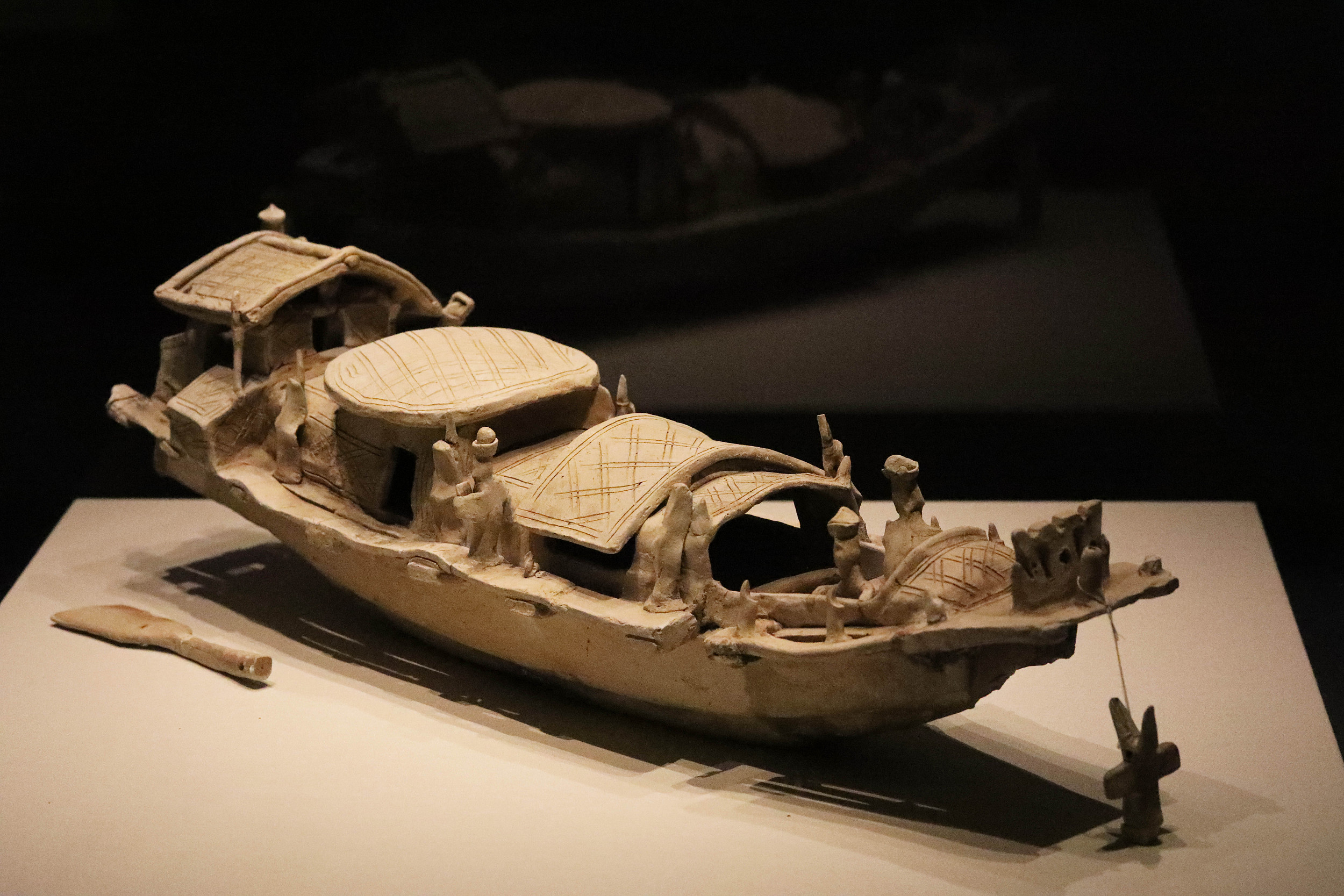Rudder: Ancient Chinese Shipbuilding Wisdom

A pottery boat from the Eastern Han Dynasty (25-220AD) unearthed in Guangzhou, Guangdong province in 1954 is exhibited at
National Museum of China. (PHOTO:VCG)
By BI Weizi
China is the first country in the world to invent the rudder, which is a major achievement in China's shipbuilding and navigation technology, and subsequently went on to have a profound influence on the world of navigation.
A rudder is the device used for steering and maneuvering a vessel, which is attached to the outside of the hull and operates by redirecting water past the hull.
The rudder developed from an oar, which is an implement used for water-borne propulsion. In the early days of ancient navigation, there were two types of oars, one for rowing and the other for controlling the direction of the boat. The oars controlling direction were called rudder oars. The position of the rudder propeller gradually moved from the side to the center of the stern, becoming the tail propeller. The operation method gradually changed from rowing, to swinging left and right, without leaving the water surface. However, such a tail rudder propeller had some defects, for example being difficult to operate when encountering shoals of fish or landing. This led to ongoing improvement in the shape and installation of the rudder, until the rudder we know today was invented.
The world's oldest depiction of a stern-post rudder can be seen on a pottery model of a Chinese junk from the Han Dynasty (202 BC-220 AD), a thousand years before they appeared in the West. It was discovered during archaeological excavations in Guangzhou in 1954.
In the 10th century A.D., Arab sailors began to use the Chinese rudder. From late 12th century to early 13th century, it was introduced into Europe through Arabia, which laid the technical foundations for creating the great sailing era of humankind in the 15th century.


